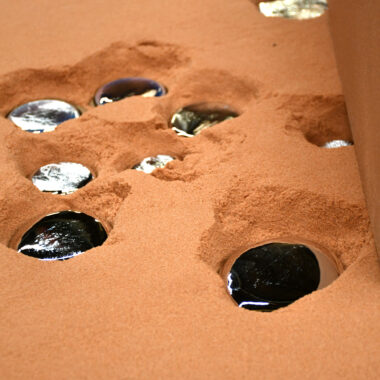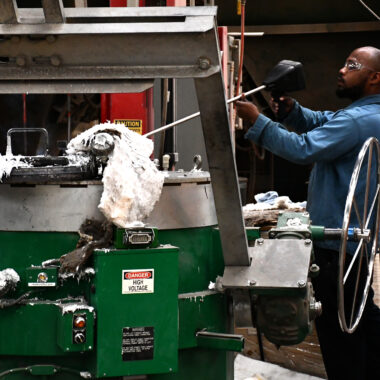Unlocking Quality: Aluminum Casting Techniques & Tips for Superior Outcomes
Unlocking Quality: Aluminum Casting Techniques & Tips for Superior Outcomes
Blog Article
Learning Light Weight Aluminum Spreading: a Deep Dive Into the Numerous Strategies Readily Available
Light weight aluminum casting stands as a keystone of modern-day production procedures, providing convenience and accuracy in creating complex styles and functional components. As sectors increasingly transform to light weight aluminum for its lightweight yet resilient residential properties, mastering the various spreading strategies ends up being extremely important. From the typical approach of sand spreading to the complex procedures of investment casting and die casting, each technique offers distinct challenges and advantages. Comprehending the subtleties of these methods is crucial for making certain the high quality and effectiveness of the spreading process. In this exploration of aluminum spreading methods, we will certainly clarify the complexities of each method, providing understandings that could revolutionize your method to light weight aluminum casting.

Sand Casting Technique Introduction
The Sand Casting technique's adaptability and widespread application make it a cornerstone in grasping light weight aluminum spreading procedures. This method entails developing a mold and mildew from a combination of sand and a binder, such as clay, to create detailed shapes for casting liquified light weight aluminum. Sand casting is a preferred option due to its fairly inexpensive, ease of alteration, and ability to generate complex geometries with high precision.
The process starts with the development of a pattern, commonly made from wood or steel, which is pressed right into the sand to produce a mold and mildew dental caries. When the pattern is removed, the mold and mildew cavity is loaded with liquified aluminum, which strengthens to take the form of the pattern. After cooling and solidification, the sand mold is escaped, revealing the aluminum spreading.
Sand casting is widely used in different industries, consisting of automobile, aerospace, and manufacturing, as a result of its flexibility in creating both large and little aluminum parts (aluminum casting). Its versatility to detailed layouts and cost-effectiveness make it a recommended option for many light weight aluminum casting applications
Irreversible Mold And Mildew Spreading Refine Described
Checking out the details of aluminum spreading, the Long-term Mold and mildew Casting process supplies a polished technique for creating high-grade parts with precision and effectiveness. Unlike sand casting, long-term mold spreading uses a reusable mold normally made of steel or iron to shape the liquified aluminum.
Permanent mold and mildew spreading can be classified right into 2 main types: gravity spreading and low-pressure casting. Gravity casting involves pouring the liquified steel right into the mold and mildew using gravity, while low-pressure casting utilizes low pressure to fill the mold and mildew dental caries. Both approaches supply advantages in terms of decreasing porosity and boosting mechanical buildings.
Die Casting: Benefits and Drawbacks
Mastering the intricacies of die spreading includes recognizing its distinctive advantages and negative aspects in the world of aluminum component manufacturing. One key benefit is the high-speed manufacturing capability of die casting, allowing for the mass production of complex shapes with limited tolerances.
The procedure is not as adaptable when it comes to develop modifications compared to other casting techniques like sand casting. In spite of these restrictions, the advantages of die casting often exceed the downsides, making it a recommended choice for several light weight aluminum spreading applications.
Investment Casting Applications and Advantages
Building on the benefits of die casting, investment casting provides a flexible approach for producing elaborate light weight aluminum parts with distinct advantages in numerous applications. Financial investment casting, likewise referred to as lost-wax casting, succeeds in creating complicated forms that would certainly be impossible or tough to accomplish through other approaches. This technique is widely used in markets such as aerospace, automobile, and jewelry production.
Among the crucial benefits of financial investment spreading is its capacity to generate near-net shape components, decreasing the requirement for added machining and minimizing material waste. This causes expense savings and faster production times contrasted her comment is here to typical machining procedures. Additionally, financial investment casting permits the manufacturing of parts with superb surface finishes and tight resistances.
In the aerospace industry, investment spreading is preferred for its capability to generate lightweight yet strong parts critical for aircraft efficiency. The vehicle industry take advantage of investment casting for generating components with high dimensional accuracy and intricate layouts. On the whole, investment casting uses a precise and affordable remedy for making elaborate aluminum parts across various markets.

Lost Foam Spreading: How It Functions
Lost foam spreading, also known as evaporative-pattern spreading, is an approach for creating detailed steel parts by utilizing foam patterns that vaporize during the casting process. When molten metal is poured into the mold and mildew, the foam vaporizes due to the warm, leaving behind a dental caries that is after that filled by the metal.
One of the key advantages of lost foam spreading is its capability to produce complicated forms with detailed information that might be testing to achieve with other casting methods. Additionally, the process can be affordable as it removes the demand for cores and enables the loan consolidation of multiple parts into a solitary part. However, it requires mindful control of the procedure specifications to ensure proper foam vaporization and steel circulation.
Conclusion
In go to this web-site verdict, grasping light weight aluminum casting involves understanding and utilizing various techniques such as sand casting, permanent mold and mildew spreading, pass away spreading, investment spreading, and shed foam spreading. Each strategy has its own benefits and applications in the manufacturing process. By familiarizing oneself with these various techniques, makers can pick one of the most ideal casting strategy for their details demands and requirements, inevitably resulting in effective and effective production of light weight aluminum elements.
From the typical approach of sand spreading to the facility procedures of investment spreading and die spreading, each strategy offers special challenges and benefits. In this exploration of light weight aluminum spreading methods, we will certainly shed light on the intricacies of each technique, offering insights that can revolutionize your method to light weight aluminum spreading.

Report this page